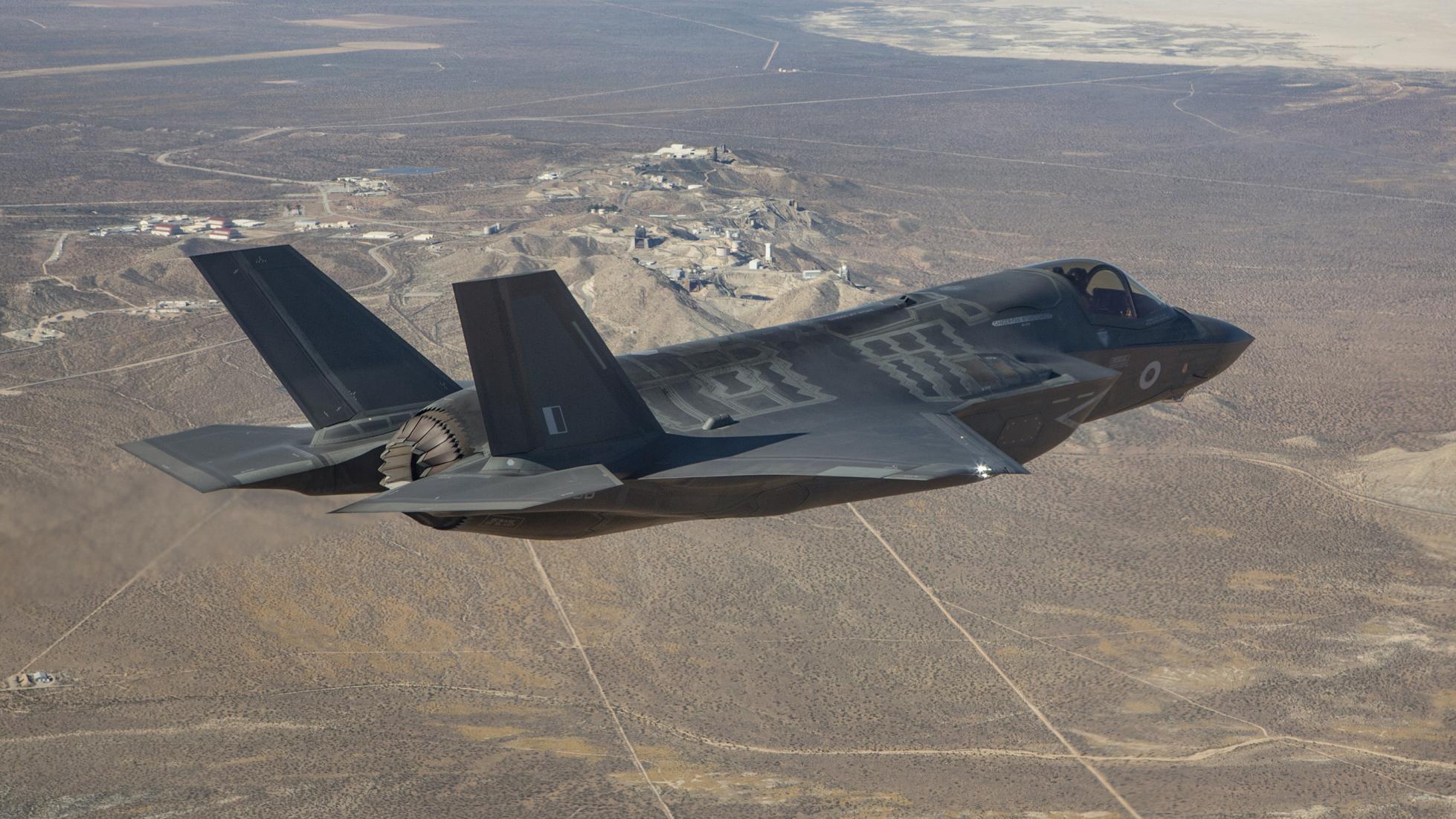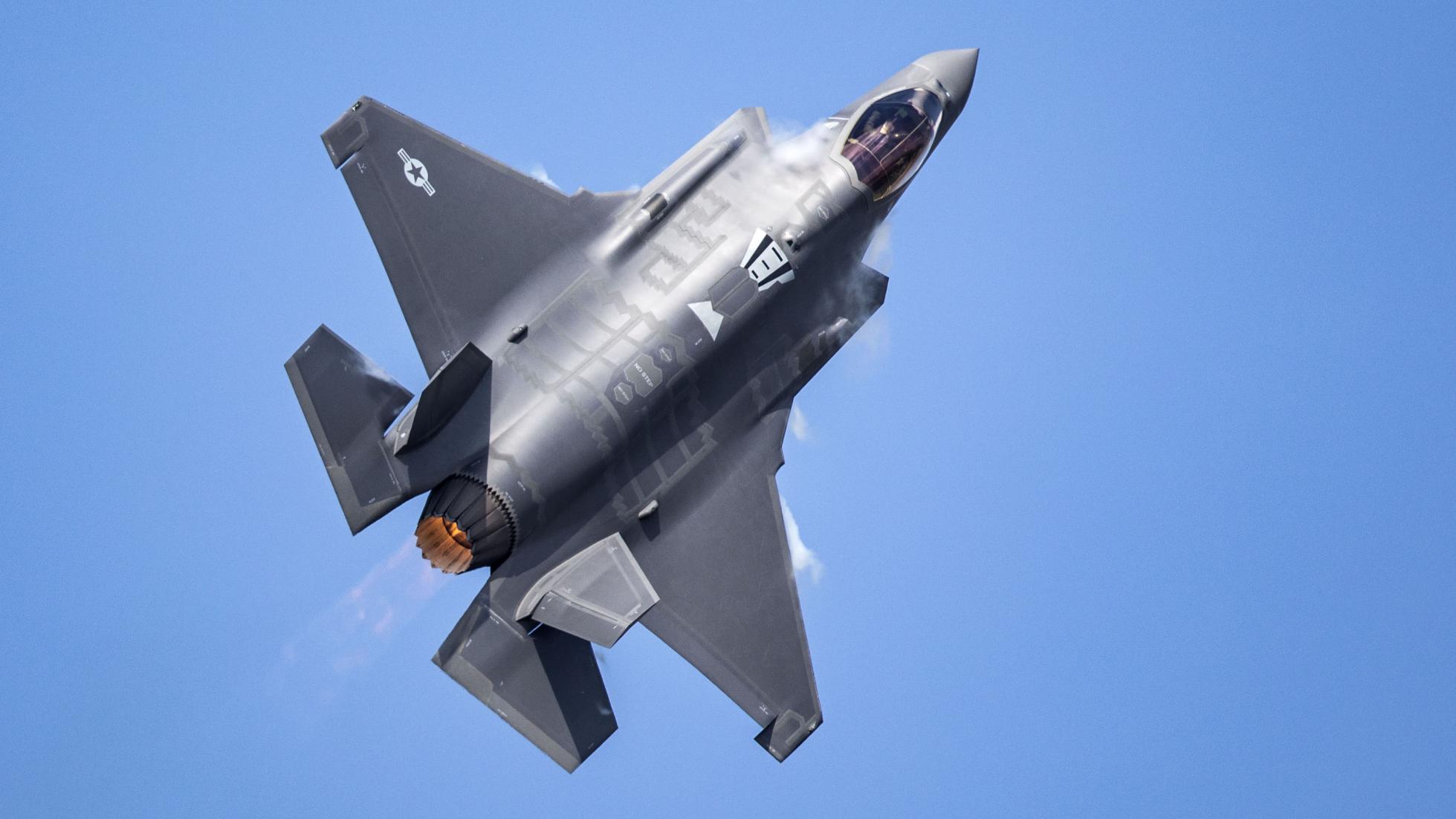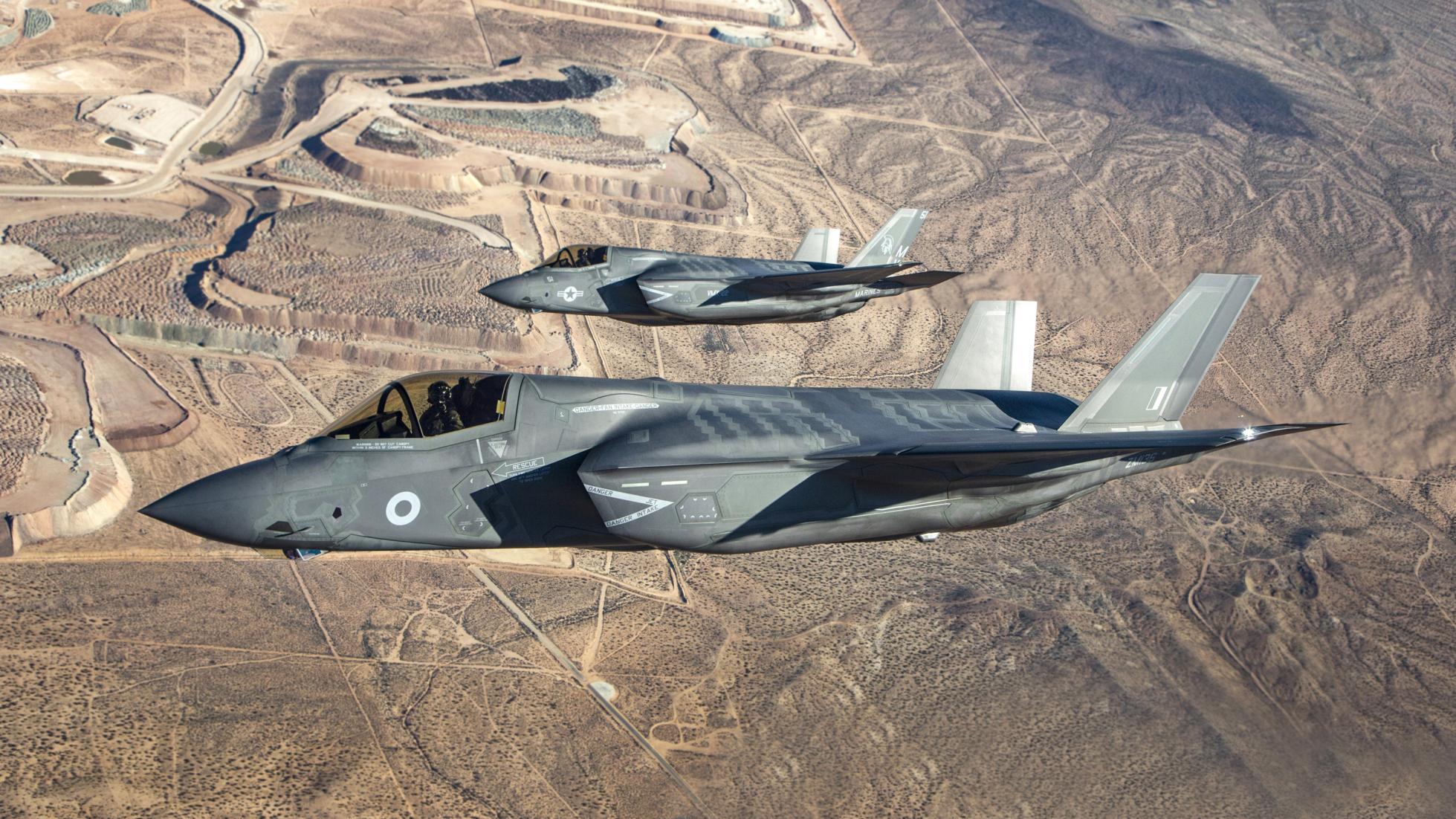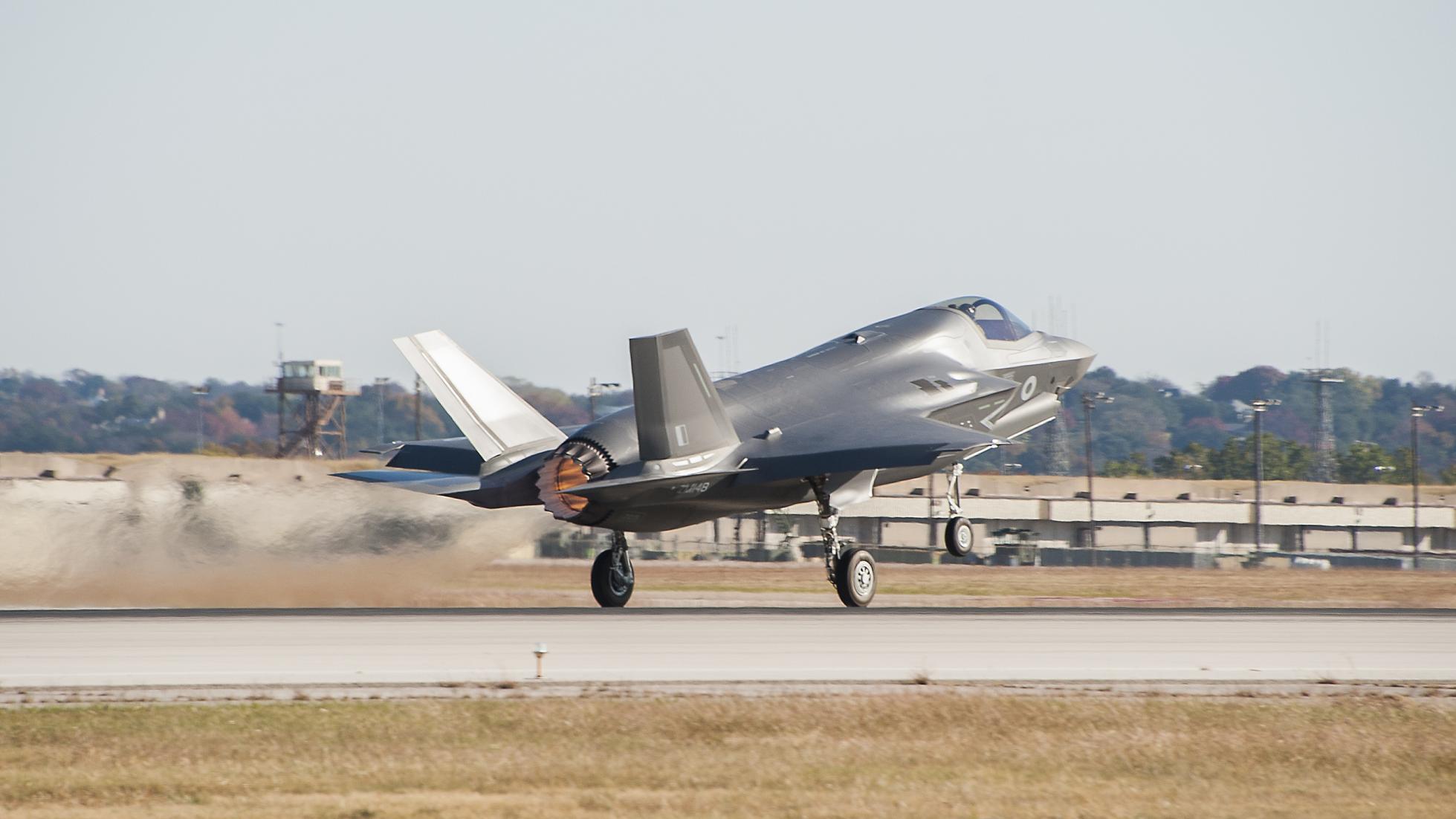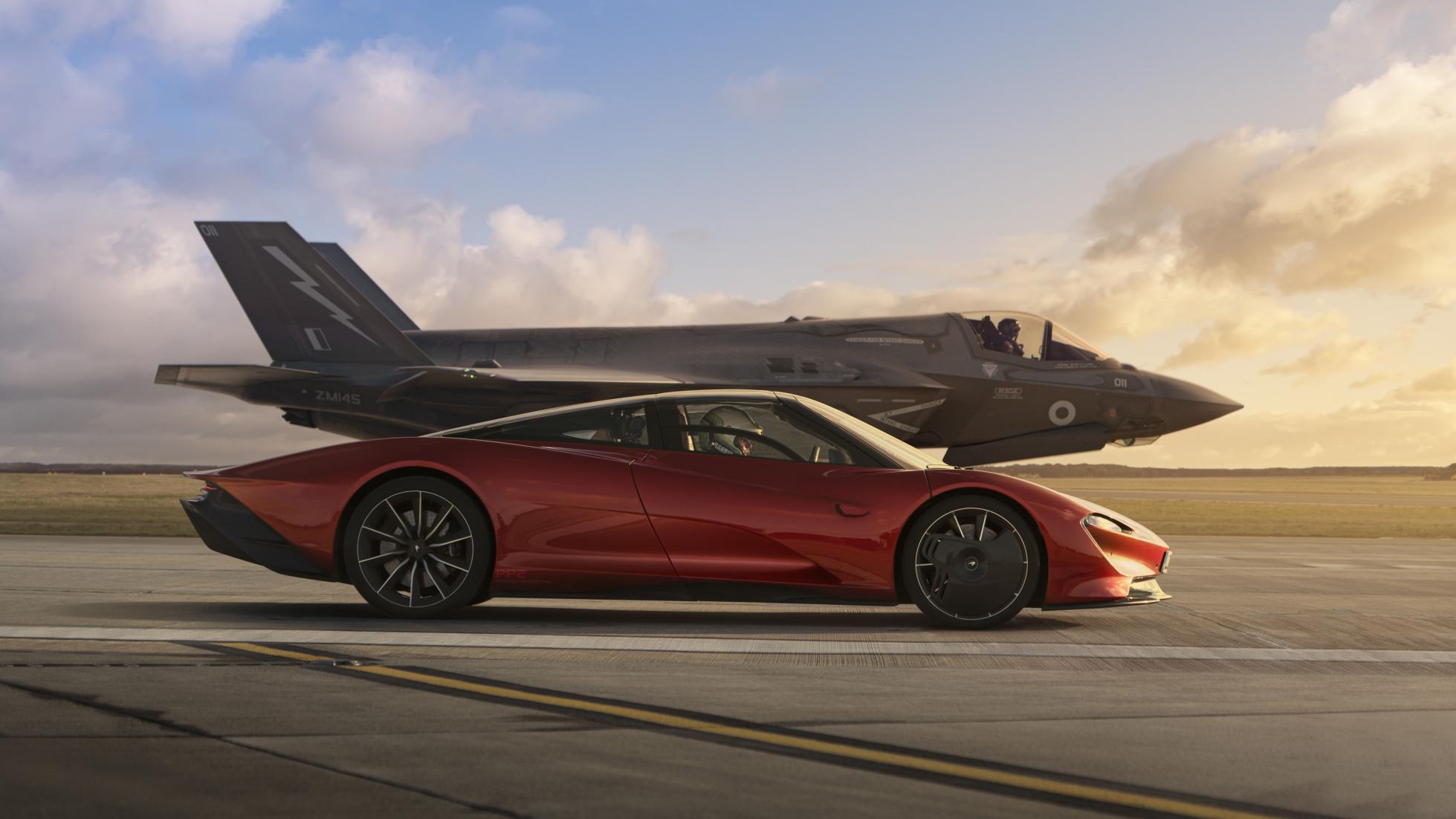F-35 Lightning review: what's the RAF's new jet like?

OVERVIEW - What is it?
It’s a £100 milion [RM545.6 million], 1,200mph [1.931kph] fighter jet. Numbers which are way, way beyond the realms of even the most fantastical of hypercars. The F-35 Lightning is made by Lockheed Martin in North America, but it’s the end product of a project involving nine nations, who all operate fleets of F-35s from their home soil.
The Royal Air Force, here in the UK, is running a bunch of them out of RAF Marham in Norfolk as well as on the Royal Navy’s new Queen Elizabeth aircraft carrier. UK parts and knowhow have fed heavily into the Lightning’s development and production, not least because of the demands placed on its optional short take-off and vertical landing system (STOVL) by the unique length of Queen Elizabeth. The ship, not the lady.

Rather like you can buy your Audi A5 as a coupe, convertible or hatchback, you can spec an F-35 in three different forms. The F-35 A packs in more missiles and can achieve 9G, while the F-35 B – employed by the RAF – gets those STOVL systems which eat into missile space and curb you to a still-quite-dramatic 7.5G. The F-35 C is designed for Navy carriers where vertical landing isn’t necessary, with longer wings and stronger landing gear to allow for catapult launches.
What unites them all is how stealthy they are. They are all classified as fifth-generation fighter jets, where their ability to accrue, process and share information on the enemy is at least as important as attacking them. “The fourth-generation adage was ‘speed is life and more is better’ – basically, ‘I can’t fly fast enough’,” Lockheed Martin’s Steve Over tells us. “Today, F-35 pilots say ‘information is life, and more is better’.”
The Lightning is as stealthy as fighter jets currently get. But to achieve this, it needs as few creases and inconsistencies on its surface as possible. So all of its weapons are kept within its radar-deflecting skin, as is the 29,000 horsepower lift fan on the F-35 B that allows the RAF’s jets to demonstrate their mesmerising hovering trick.
Supplied by Rolls-Royce, it’s among 15 per cent of the F-35’s components originating in Great Britain. While Lockheed Martin will sell more F-35 As, it’s the B we’ve focused on in the coming pages, as that’s what the RAF will purchase 138 examples of, the first gaggle of which live at RAF Marham under the watch of Station Commander Jim Beck. Who’s here to talk us through just what it’s like to fly these things…

DRIVING - What is it like on the road?
“Oh yeah, there’s an excitement to your first time flying the F-35,” Jim Beck assures us. “You’re breathing slightly quicker. And I went in there with 2,000 hours in various other jets. I was ridiculously confident in my own abilities but still found myself nervous when I got to the end of the runway.
“The performance of this jet – when you let the brakes go and do a burner take off – it’s ‘WOAH, well I wasn’t expecting that’. You take off at 150 knots. Once you get it airborne, and the sim has taught you everything, your nerves go right down. Then I brought it back and I’d never hovered in anything else – I’d just taught myself on the sim – so I was nervous. But as I got down, the first thing I said to the other pilots in the squadron is ‘my god, the simulator’s realistic’.

“The jet fuses all of its data together and only presents about one per cent of it to the pilot, when a human decision is required. The actual ‘flying’ is the easiest bit. You don’t even think about it anymore. You ask the jet ‘can I do something’ and the jet will do it if it’s safe to do so. There isn’t a car like that out there.”
Especially given the F-35s employed by the Royal Air Force are B models, meaning they can vertically hover before landing. “Autopilot is a little smarter in the STOVL and hover modes,” says Jim. “We’ve got numerous hover modes but the coolest is when the engine is just holding you up, you’ve got no lift off the wings. All 40,000 pounds of thrust is keeping you in the air. You’re fully in autopilot at that point.
“We’ve actually got modes where it’ll decelerate itself alongside the Queen Elizabeth carrier, by analysing what speed the ship is doing. It’ll come alongside and control its deceleration automatically. Returning to a boat is now actually quite a stress-free environment. Years ago, Harrier pilots would come back dripping in sweat thinking about STOVL or hover. We don’t do that!
“Let go of the controls and it just stabilises. When you’ve finished a manoeuvre you’ve asked the jet to do, the safest thing is to just let off the controls and it’ll right itself. It’s probably the smartest autopilot in the world right now.”
Which rather begs the question, given how much pushback there is in the car enthusiast world against autonomous driving and the swathes of active safety systems swiftly becoming the norm, is the F-35 too clinically adept to make its pilot a hero?

“Not when you’re doing ‘doggers’, as we call them,” Jim assures us. “We fly a thing called ‘angle of attack’ and while a Tornado could go 19AOA, we’re going to 50AOA. Which means I’m flying 80 knots and still fighting it. We just keep going up, and the last person to stop going up will win that fight. And that’s absolutely exhilarating. If I tried that in a Tornado I’d be in a parachute.”
It’s also, Jim suggests, an increasingly old-fashioned skill. “The dogfight exists but in a completely different domain now. If we were to go against an adversary, I’m doing it in a dogfight, but I’m not doing it in the jet’s physical domain. It takes place on the information spectrum now. And that information is shared between a pack of F-35s.
“Ideally we never want to get anywhere near our adversary. We want the battle to be done tens and tens of miles away, far enough that I won’t even get to see him through the naked eye. We’re talking ranges where our radars never used to see the opponent.”
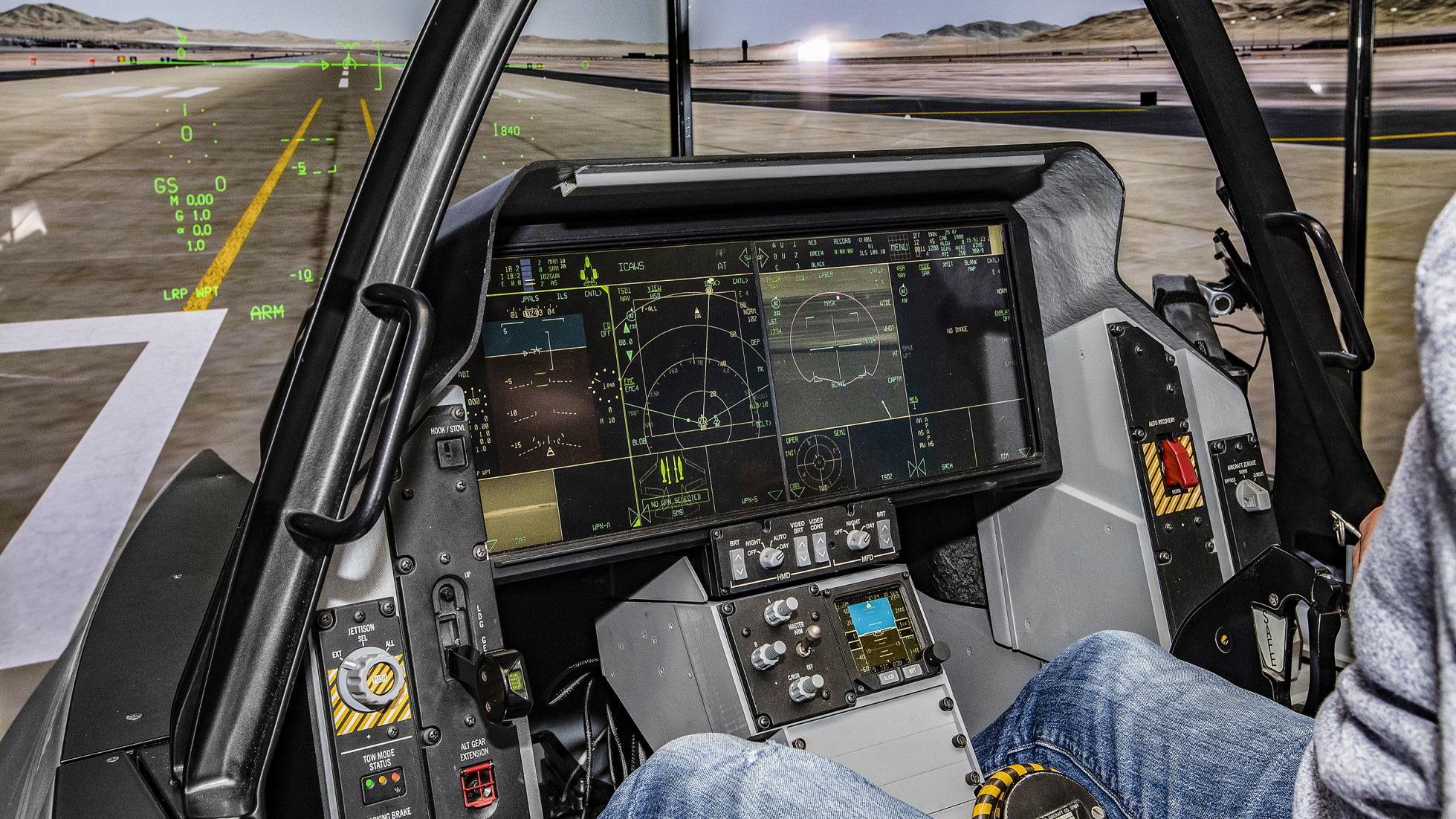
ON THE INSIDE - Layout, finish and space
We can’t actually show you the insides of an F-35 – that’s classified, somewhat inevitably – but we’ve had a poke around a simulator and a mock-up cockpit, which the F-35’s engineering team practice fixing the ejector system on (yikes). It was enough of a glimpse to confirm, like in the world of cars, the screens are taking over, scooping up the functions previously served by oodles of buttons and rationalising them into customisable displays.
And the physical controls that do remain? They’re largely just there to stop us fleshy old-fashioned ‘people’ thingies freaking out. “It won’t let you fly into the ground or into another jet, it’ll just say ‘No! Now you go and do your human things you need to do’,” says Jim.
“It’s just breath-taking, it really is. The controls only move for human comfort, to help us comprehend it. They’re only really there because that’s how pilots have always been trained.”
While the head-up display made famous by jets has now drip-fed down into even the smallest of cars, the F-35 will burst the bubble of any pub boasts: it’s ditched HUD and now feeds all the key displays into a £250,000 [RM1.36 million+] helmet, which is bespoke-fit for each pilot.
“Fitting a HUD in modern jets is so expensive, so complex, and it’s really heavy,” says Jim. “The helmet is arguably a tenth of the cost of a HUD. And I’m no longer constrained to seeing what’s in each bit of the cockpit, I’ve got all the displays wherever I look.
“As for the physical controls and displays, the team worked incredibly hard so it is incredibly intuitive. There are two sticks with 18 buttons each. It takes eight hours a day for eight weeks to learn it all to the point it’s natural.”

OWNING - Running costs and reliability
‘Owning’ is quite the phrase. Because an F-35 B costs somewhere in the region of £100 million [RM545.6 million] (the simpler F-35 A is more like £85 million [RM463.7 million+]), and you don’t just buy one. You buy and run a bunch of them to work together in packs.
But the Lightning aims to counteract its slightly high point of entry with significantly lower maintenance costs than all the jets that have gone before it. So you’re looking at figures like six hours of maintenance per flying hour (rather than nine), and three engineers per check-up (as opposed to ten). It’s all aimed at reaching a target running cost of US$25,000 [approx. RM100,325] per flying hour.
The jet doesn’t just use automated tech to help out its pilot, either. It assists its maintenance team in a similar manner, with its onboard computers flagging up potential faults or maintenance requirements before they become critical, and even identifying to what extent the F-35’s stealth coating might need repair – and calculating when it’ll be best to park the jet up and have this done. A process which can take place in the confines of a carrier, where it previously needed a forensic lab on dry land.
All of which makes us ask Jim whether the jet – and its array of systems – could be vulnerable to cyber-attack that makes it redundant – or worse – turns it against its own force.
“Its brain conducts a really clever thing called a VSBIT – a vehicle systems built-in test,” says Jim. “The pilot presses a button just before he’s going to take off and the jet looks at itself and asks ‘am I fit to fly?’
“You’re watching its panels fly everywhere, it’s doing all this funky stuff, and then it comes back and says ‘VSBIT complete’. So long as that’s done, it doesn’t matter what’s happening on the outside world, the jet is good to go.”
It can do that offline – making the F-35 able to operate in the unlikely event of a cyber-attack on its systems – and the VSBIT takes one minute. Sixty seconds to perform checks which comprised a one-day process on F-15, or an entire shift for the F-16. Where those fourth-generation jets needed their engines firing up to perform pre-flight checks, you simply press a button on a computer screen for the Lightning.
The lifetime of F-35 is officially 8,000 hours, but that’s a figure actually decided by the US government, who officially head up the programme (or ‘program’, given it’s ‘Murican). Lockheed Martin has successfully tested F-35 As for 24,000 hours, and has the data to prove a safe 12,000 hours of airworthiness, so expect the jet’s lifespan to be extended in the years to come.

VERDICT
The F-35 hasn’t had an easy time of it, with critics claiming it’s late, over budget or simply not quick or nimble enough to be a proper dogfighter. But for the role planes like this fill nowadays, its vast complexity helps it meet its brief – one simply not applicable to jets in the generations before it.
“Let’s say I offered you the keys to a Sixties 911 or a brand-new Tesla, and it’s a hot summer’s day and you can drive one to France,” Jim proffers. “I bet by Dover you’d be wanting to hand the 911 keys back. There is a bit of romance about flying older planes, but we’re a professional force and it’s more about what the jet can do. That’s the difference between a ‘pilot’ and a ‘fighter pilot’. It’s pulling the wings off the jet, seeing what it can do, and pushing your body to its limits.”
But while it’s still thrilling to fly in the right hands, the F-35 is also so much more – an intelligent being that takes the hard work out of the pilot’s hands and can translate nine million lines of source code into one nugget of information, fed into a helmet that costs more than a modestly specced McLaren 720S. It’s a fighter jet that operates very differently to those that went before it, but is no less awe-inspiring for it.
A hugely capable device. Not cheap, but it should be easy to run. By, y'know, jet fighter standards
| FOR | AGAINST |
| As intelligent as fighter jets get | A Tornado has a bit more old-school feel |
| SCORE | 9/10 |
Photography: Lockheed Martin
